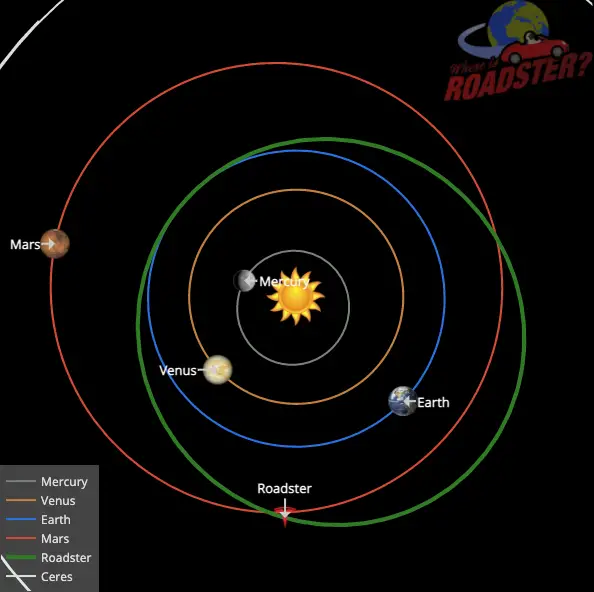When Elon Musk’s cherry-red 2008 Tesla Roadster launched on a test flight four years ago, it carried an unusual payload: a spacesuit-clad dummy called “Starman” on Elon Musk’s SpaceX Falcon Heavy rocket (a heavy-lift variant of the Falcon 9 rocket).
Since then, the red Roadster has wandered about the solar system in an uneven orbit, traveling around the sun every 557 days or so, according to WhereIsRoadster.com, an independent site that tracks the car’s real-time position in space.
Observer earlier claimed that the Starman-Roadster team had completed their maiden solar orbit in August 2019 and had flown past Mars for the first time in October 2020. The automobile has circled the sun 2.62 times as of this writing.
It is presently 234,366,378 miles away from Earth, or 20.97 light minutes. The Roadster is traveling at a rate of 4,020 miles per hour (6,470 kilometers per hour).
After launching the Roadster into orbit above Mars, SpaceX had anticipated it would crash into the Red Planet, which sparked concerns from several scientists due to the car’s unsterile state.

Is it? According to WhereIsRoadster, yes, it is absolutely on its way to Mars. However, a study by University of Toronto scientist Hanno Rein has projected that the Roadster would more likely crash into either Earth, Venus, or the Sun—in around 10 million years—and not the other way around.
So far, his prediction has been correct. After passing Mars’ orbit in November of last year, “Starman” has been drifting into the solar system’s asteroid belt as predicted by Rein.
Space Oddity by David Bowie and Life On Mars? by Brian Eno was playing in the ears of Starman, Musk’s mock spaceship when it took off in 2018.
Starman would have listened to Is There Life On Mars? and Space Oddity 397,224 times by now if the battery still worked.

